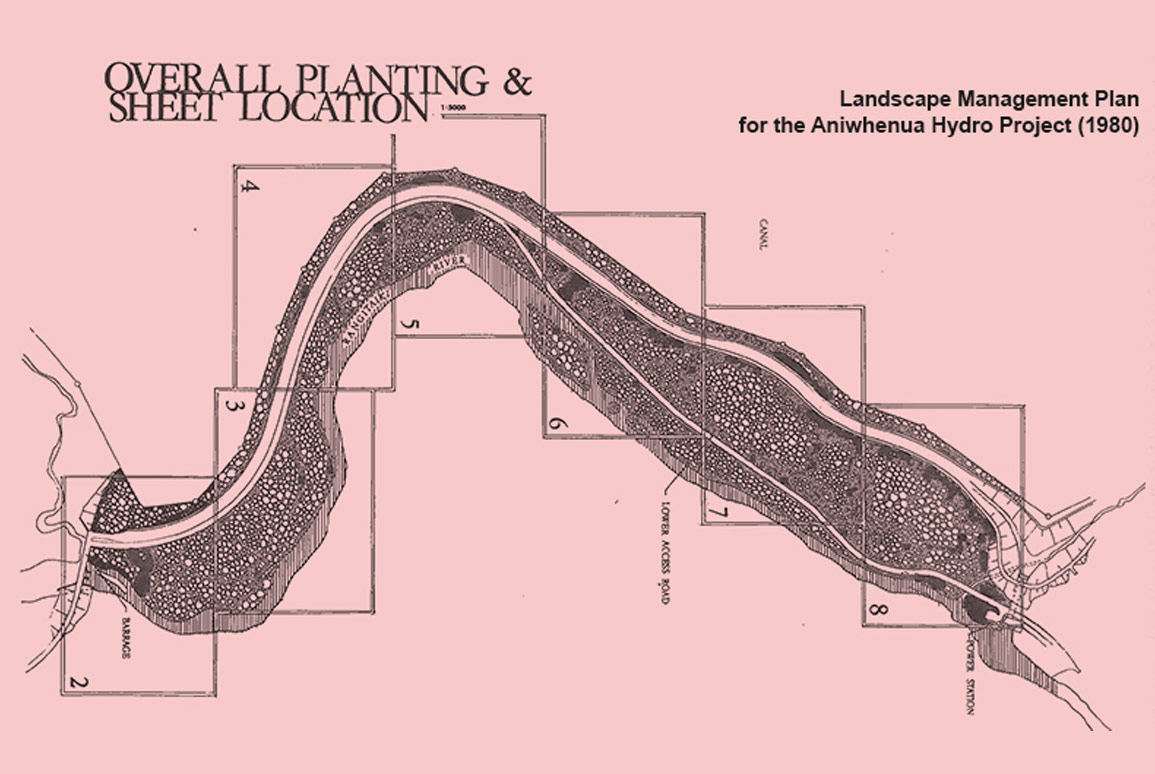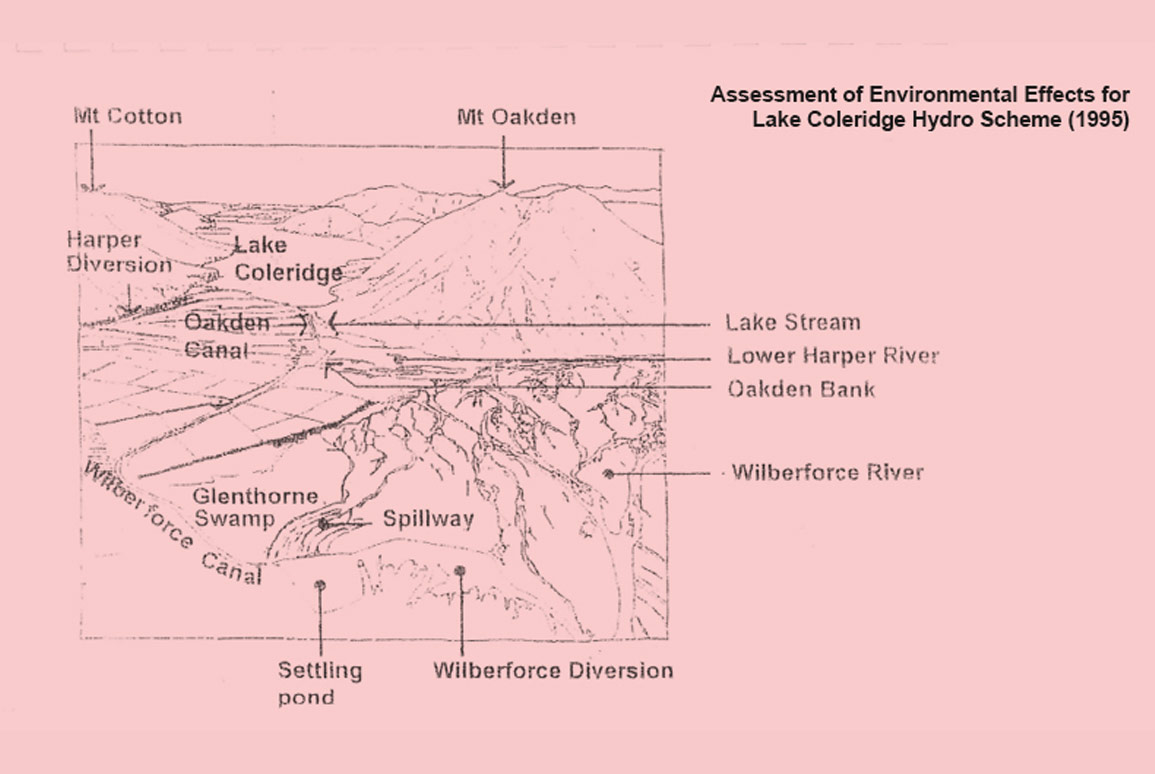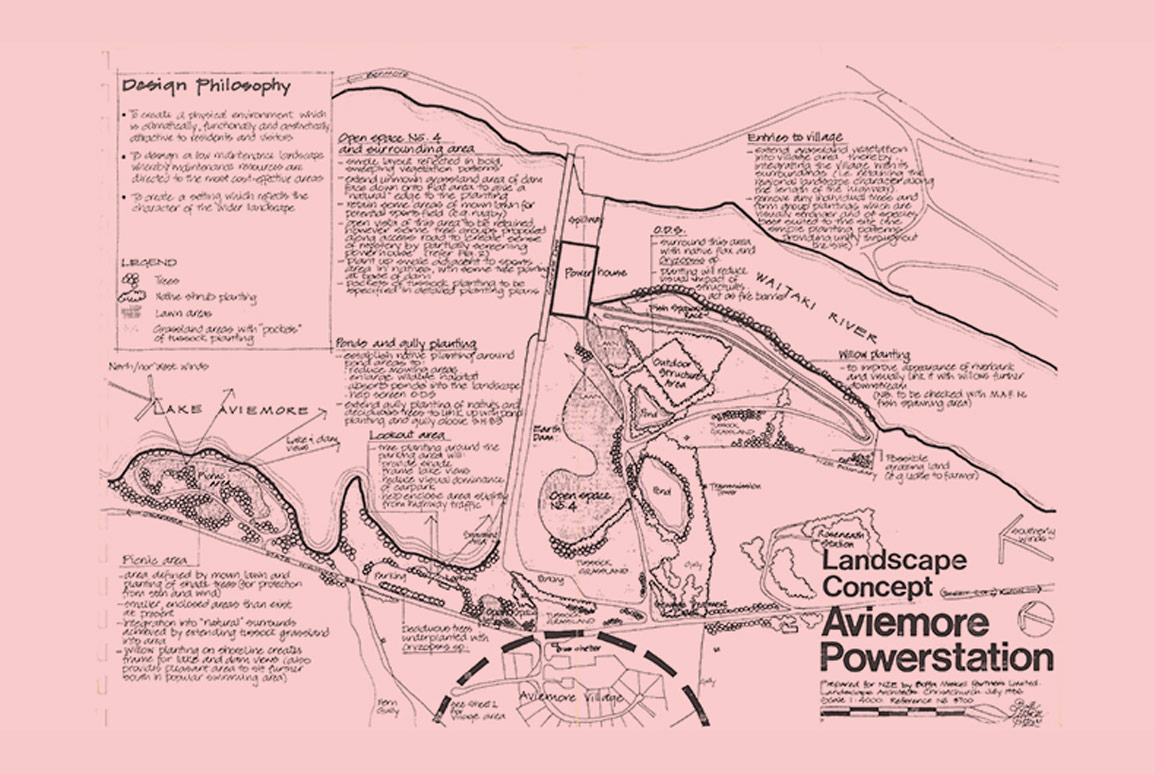Focus on our 50th: On-going involvement in Renewable Energy
18 August 2022
From hydroelectric schemes in the 1970s to solar developments in the 2020s, Boffa Miskell has been at the forefront of development and advancement of Aotearoa's renewable energy sector.

Right from the start, Boffa Miskell landscape architects provided planning and environmental assessment / management services for several major hydro-electricity generation projects throughout New Zealand. The scope of these projects has included significant upgrades and enhancements of existing schemes, as well as new hydro schemes.
The company’s earliest work in relation to hydro-electric schemes initially involved the creation of landscape management plans for hydroelectric sites at Dillmans (1978-1980) and Aniwhenua in the Bay of Plenty (1980)
The Aniwhenua landscape management plan involved recommendations for a landscape planting and management programme for the initial site works of the hydro-electric project. Much of the proposed planting was at production forestry densities using species offering market potential.
These early landscape management plans had a focus around integrating the developments into the surrounding landscape, primarily through revegetation for both commercial and amenity purposes.
Other hydro schemes in the 1980s included the Aviemore power station and village proposal (1986) which aimed to create a low maintenance landscape and a visual and ecological context for the powerstation and highway areas in harmony with the regional landscape.
Wellington-based landscape architect Boyden Evans has over 30 years’ experience in these projects. He says, “Boffa Miskell’s multi-disciplinary ability to interpret and thoroughly understand complex hydrological, ecological, social and cultural elements of natural systems, and our familiarity with hydropower development and operations, has been fundamental to our success in meeting client expectations in this sector.”
In the 1990s, work on hydroelectric projects began to move away from purely restoration-based strategies into the field of landscape studies which could be used to inform the location and/or future development of hydroelectric schemes.
In 1995 Boffa Miskell prepared the Lake Coleridge Landscape Study which investigated landscape values which may be affected by ECNZ developments in the Wilberforce, Harper, Acheron and Rakaia Valleys and in Lake Coleridge. This study built upon earlier work undertaken in 1993 in preparing the Canterbury Landscape Study.
Similarly, in September 1994 Boffa Miskell Limited was commissioned to prepare a visual landscape assessment of the lower Waiau between the Mararoa Weir and Blackmount. This study was dependent upon assessing the effects of controlled flows at the Mararoa Weir. Other varied work for hydro schemes in the 1990s included a report into the recreational use of waterways in the Tongariro Power Development Scheme (1999).

In the early 2000s, work on hydroelectric schemes continued for projects at Hinemaiaia and Kaimai. The Wairau Hydroelectric Scheme was another major project at this time, which involved the construction of approximately 50km of new canal and four power stations. Boffa Miskell landscape planners reviewed the relevant provisions of the Wairau/Awatere Management Plan and assessed the physical and visual effects of the development including the effects of low and variable river flows on natural character and outlined landscape mitigation and enhancement proposals for the project. Our ecologists also assessed the terrestrial ecological effects of the project.
The early 2000s also saw the introduction of large scale wind technology into New Zealand. Boffa Miskell landscape planners and ecologists were at the forefront of developing and undertaking landscape and visual and ecological effects assessments for new wind farms, working alongside our Technical Services team to develop the expertise required to undertake visualisations of proposed wind developments. This included developing our in house capabilities via overseas training and engaging expertise from the UK to come to New Zealand to run workshops to upskill our team.
Te Apiti Wind farm was Boffa Miskell’s first wind farm project, and was the first wind farm to supply electricity into the national grid. Boffa Miskell prepared the landscape and visual and ecology assessments for the resource consent application, including proposed mitigation and provided expert witness evidence at the subsequent planning hearing.
A number of other large scale wind schemes followed this, including White Hill Wind Farm, a 42 turbine wind farm located on the undulating hills near Mossburn, Southland. Boffa Miskell’s team of planners, landscape planners, ecologists and digital environment specialists prepared the Assessment of Environmental Effects for this consented and built project. The landscape planning team assessed the landscape and visual effects of the wind farm, taking into account the construction and permanent landscape and visual impacts and ecological effects.
Other major wind farm projects in the early 2000s included Mahinerangi wind farm (a 200MW development in Central Otago), which involved landscape and visual effects assessment, ecological assessment and extensive landowner and stakeholder consultation and preparation of consultation material, including visual simulations. For Kaiwera Downs (a 100 turbine wind farm in Southland), Boffa Miskell identified and assessed the landscape and visual, as well as ecology effects, from the pre-feasibility phases through to consenting.

The initial surge of wind farm applications in the 2000s provided opportunities for Boffa Miskell consultants to develop and refine specialist skills and experience.
“Several of those wind farms were consented, but were not built; and some of these consents have lapsed – while others, during the past few years, have been revived. Often these are seeking variations in terms of turbine design to harness advanced wind farm technology,” says Boyden Evans.
“These projects were the beginning of our landscape planners and ecologists gaining extensive knowledge of landscape and visual and ecological effects assessments for wind farms throughout New Zealand, making us a leader in these fields, as well as in the preparation of visual simulations and computer based visibility modelling,” he continues.
The 2020s has seen a resurgence in wind consenting projects, as previously consented projects become economically viable again.
Landscape planner Emma McRae has a particular interest in renewable energy projects. “The government’s plan to achieve 100% renewable electricity generation by 2035, requires rapid expansion of not only wind, but also solar power generation in the coming decade to meet electricity demand, and as New Zealand’s energy needs increase,” she says.
“It is estimated that 13 additional large wind farms are needed by 2035, which will create new consenting challenges, as issues such as cumulative effects come into play.”
Commercial scale solar energy is also expected to expand dramatically, and Boffa Miskell are assisting clients to understand how this type of renewable development can be accommodated within the New Zealand landscape and looking for ways in which these sites can be utilised as opportunities for enhancing biodiversity.
Find out more
Opinion: Consensus is needed around design and management of our green infrastructure
Spatial Planning for New Zealand’s renewable energy future
For further information please contact Emma McRae, Boyden Evans or Stephen Fuller


